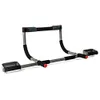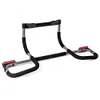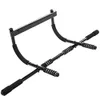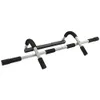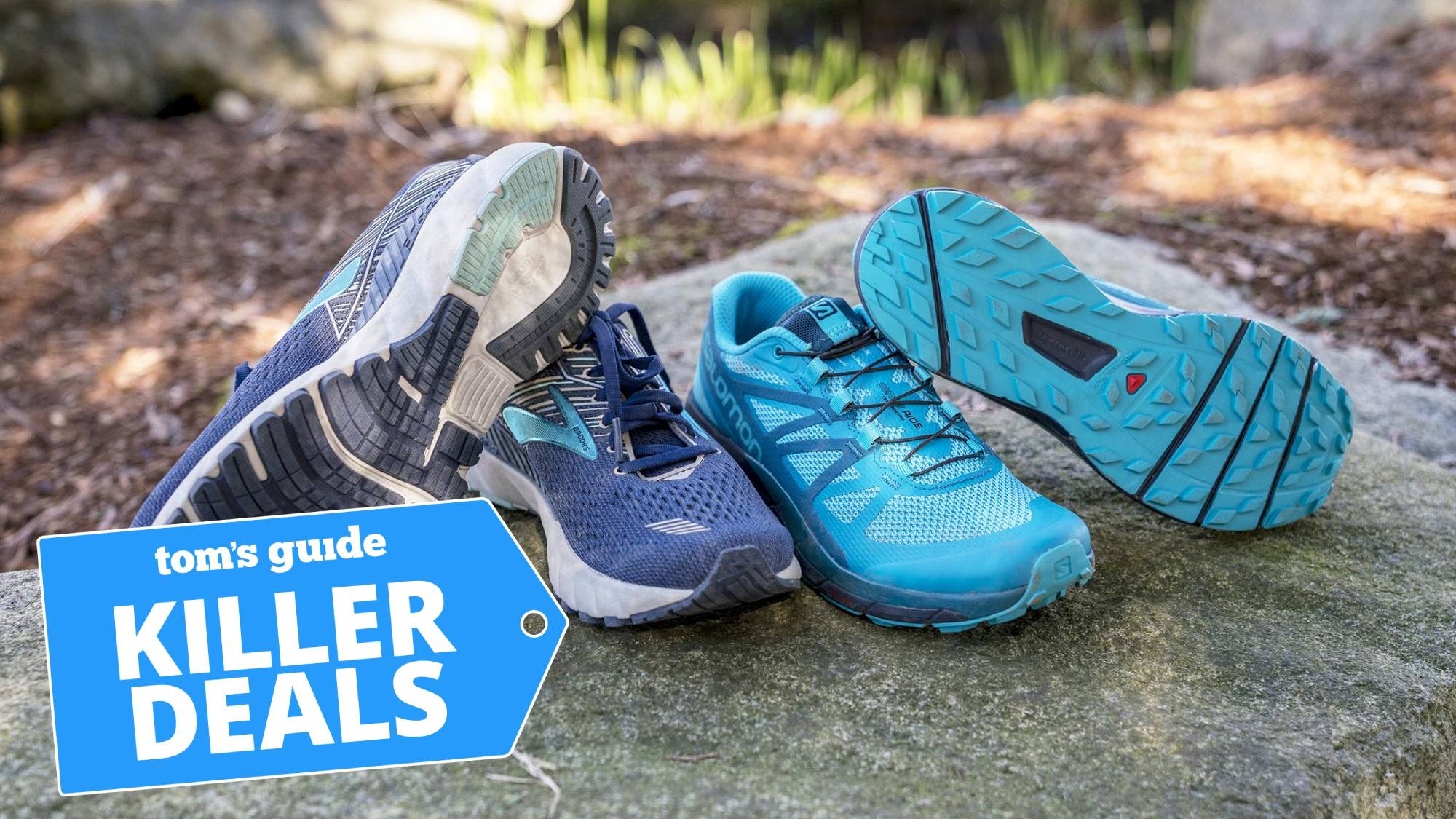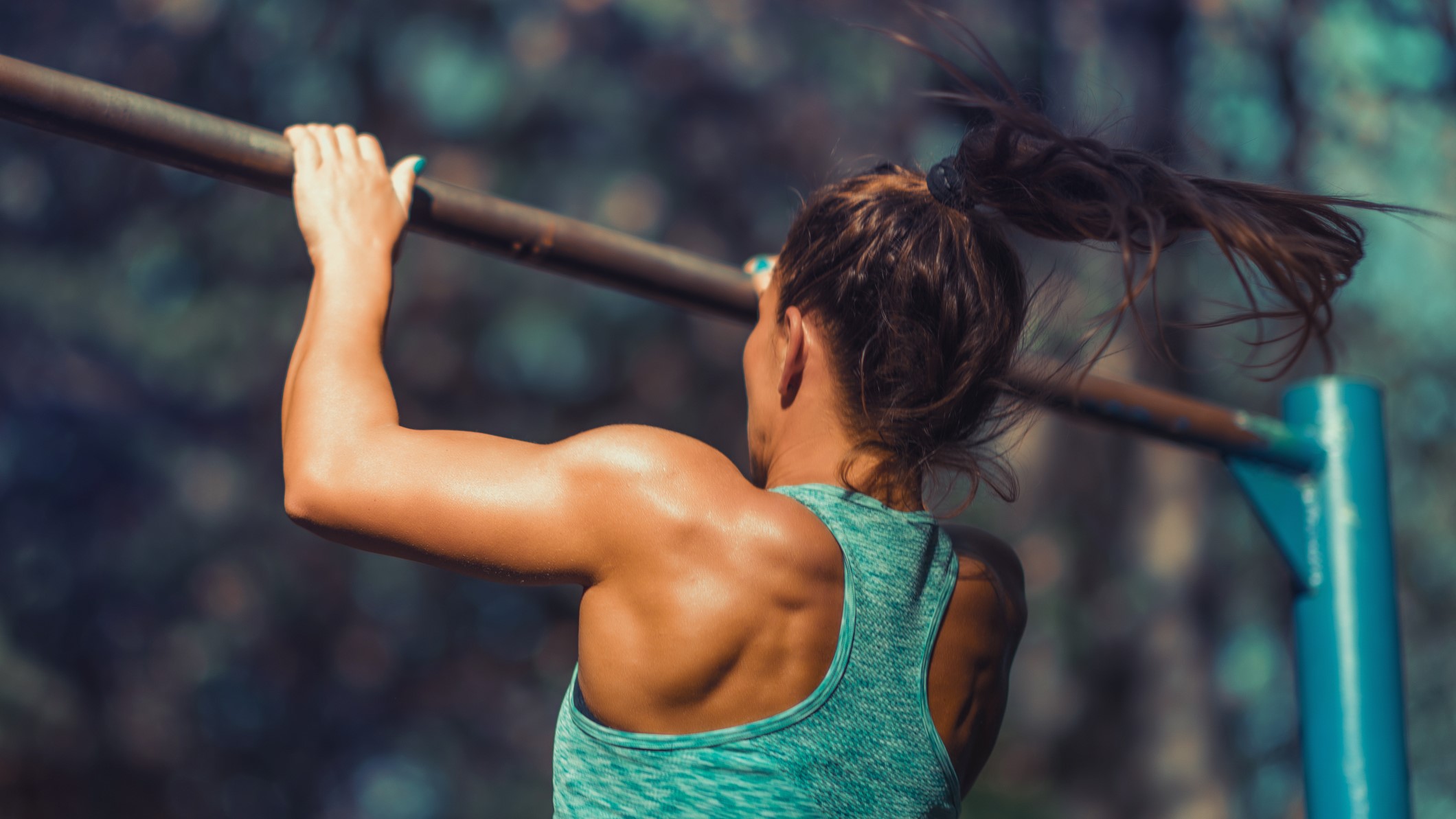
Unless you’re naturally gifted with enough upper body strength to haul your body weight over the bar, pull-ups may not be in your exercise routine yet.
Maybe you rep them out for fun, you’re working toward them, or just managed your first pull-up — whatever your ability with this coveted bodyweight strength exercise, this one hack will help improve your pull-up technique. Here’s how to do it, according to a fitness coach.
What is the pull-up hack?
Would you believe the hack is this simple — push before you pull. Yep, that’s quite literally it.
Female fitness coach, Robyn Shaw Jarvis, says pulling yourself vertically upward to the bar puts the shoulders in a “pretty awkward” position, allowing the elbows to flare outward. Besides, trying to move vertically from under the bar limits your range of motion as you move upward.
Instead, she recommends performing a slight push on the bar before you initiate the move. In her words: “You gotta go round the bar,” meaning your chin and head must go behind the bar, then up and over, rather than directly upward.
To do this, Shaw Jarvis recommends hanging from the bar, then pushing down on it (a little like initiating the lever and arch during a kipping movement) to send your body behind the bar, “displacing the shoulders back slightly.”
This should give you enough room to drive around the bar while keeping the elbows tucked as you bring your chin over. Your shoulders should also be in a better position while increasing muscle activation. Push, pull. Push, pull.
Sign up to get the BEST of Tom's Guide direct to your inbox.
Get instant access to breaking news, the hottest reviews, great deals and helpful tips.
Check out the video below for a quick demonstration of how to nail this hack.
A post shared by Robyn Jarvis | Women’s Fitness Coach (@robyn.shaw.jarvis)
A photo posted by on
What is the benefit of pull-ups?
Pull-ups strengthen your upper body and core muscles with a primary focus on your back, biceps and posterior deltoids (the rear shoulder muscles).
They also target the deeper, stabilizing muscles in your posterior chain — the chain of muscles that run down the back of your body — like the rhomboids, which support the spine and shoulders.
Chin-ups and pull-ups emphasize muscle groups slightly differently; chin-ups use an underhand grip and are more front-shoulder and bicep-oriented, while pull-ups are more back-body and lats-dominant. Pull-ups are performed overhand (palms facing away from you).
Chin-ups are easier for most people than pull-ups, so you may need to work on building your foundational strength first using a combination of movements that mimic the pull-up and work the same muscle groups.
Would you believe the hack is this simple — push before you pull.
Pull-up variations like the flexed arm hang hold can build strength in the muscles used to perform pull-ups, while also improving your technique on the bar. It’s a great way to learn the top position of a pull-up, too.
Various types of row, hang, and pulling exercises help pre-tension, contract, and position muscles and joints correctly to help you perform a pull-up with proper form; getting familiar with these types of movements will help you develop your pull-up faster while learning the skills you'll need for each phase.
Next time you’re on the bar, give this hack a go, and who knows, it could well get you your first pull-up!
More from Tom's Guide
- How to do scapula pull-ups
- Australian pull-ups for beginners
- Forget the gym — 5 full-body strength exercises for beginners using one pull-up bar

Sam Hopes is a level 3 qualified trainer, level 2 reiki practitioner and senior fitness writer at Tom's Guide. She is also currently undertaking her Yoga For Athletes training course. Sam has written for various fitness brands and websites over the years and has experience across brands at Future such as Live Science, Fit&Well, Coach, and T3.
Having worked with fitness studios like F45 and Virgin Active, Sam now primarily teaches outdoor bootcamps, bodyweight, calisthenics and kettlebells. She also coaches mobility and stretching-focused classes several times a week and believes that true strength comes from a holistic approach to training your body.
Sam has completed two mixed doubles Hyrox competitions in London and the Netherlands and finished her first doubles attempt in 1:11.

